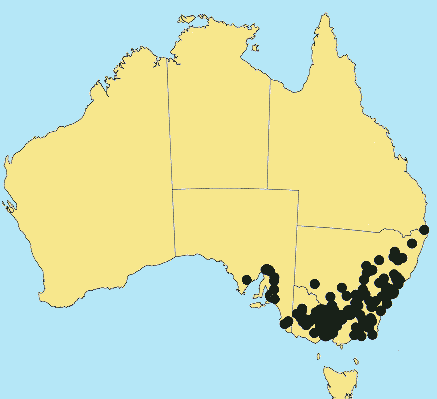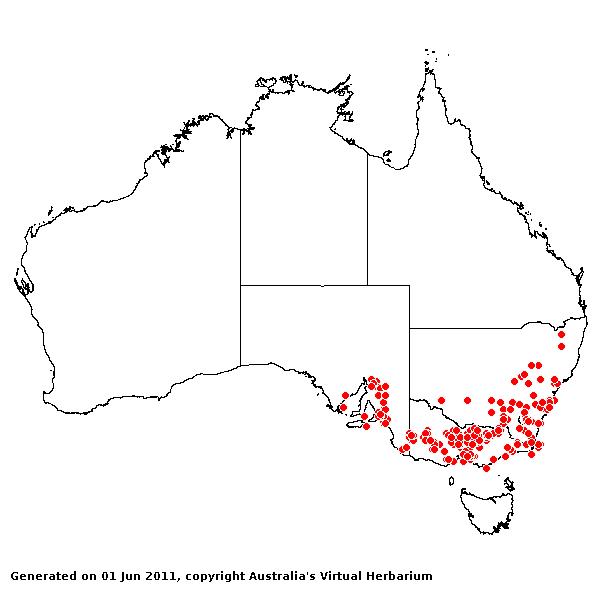Rytidosperma fulvum (Vickery) A.M.
Humphreys & H.P. Linder. Ann. Mo. Bot. Gard. .
Classification. (GPWG 2001) : Subfamily Danthonioideae. Tribe
Danthonieae.
Basionym and/or
Replacement Name: Danthonia
linkii var. fulva Vickery, Contr. New South Wales Natl. Herb.1:
299 (1950).
Type of Basionym or
Protologue Information: Australia: New South Wales: Flemington, 31 Mar
1929, G.B. Vickery s.n. (HT: NSW-1573; IT: L).
Recent synonyms:
Rytidosperma linkii (Kunth) Connor & Edgar var. fulvum
(Vickery) Connor & Edgar, Notodanthonia bipartita (Link) Veldkamp
var. fulva (Vickery) Veldkamp, Austrodanthonia fulva (Vickery)
H.P. Linder.
Key references
(books and floras): [2002] D.Sharp & B.K.Simon, AusGrass, Grasses of
Australia, [2006] J.Jessop, G.R.M.Dashorst, F.M.James, Grasses of South
Australia (290), [2008] S.W.L.Jacobs, R.D.B.Walley & D.J.B.Wheeler, Grasses
of New South Wales (143).
Illustrations:
[2006] J.Jessop, G.R.M.Dashorst, F.M.James, Grasses of South Australia (291, Fig. 226), [2008] S.W.L.Jacobs,
R.D.B.Whalley & D.J.B.Wheeler, Grasses of New South Wales, 4th edn
(143).
Derivation: L.
brown, deep yellow. Usually a reference to spikelet colour.
Habit.
Perennial. Culms erect, 30–115 cm tall, 1–3 -noded. Leaves mostly basal. Ligule
a fringe of hairs.
Inflorescence.
Inflorescence solid, a panicle. Panicle linear or lanceolate.
Spikelets.
Fertile spikelets many flowered, with at least 2 fertile florets (4–6),
comprising 4–6 fertile floret(s) (?), laterally compressed, 11.8–16 mm long.
Florets.
Fertile lemma 2.5–3.5 mm long. Lemma surface indumented. Lemma apex lobed,
awned, 3 -awned. Median (principal) awn 7.5–13.5 mm long overall. Lateral lemma
awns present. Lodicules present. Anthers 3. Grain 1.8–2 mm long.
Continental
Distribution: Australasia.
Australian
Distribution: South Australia, New South Wales, Victoria.
South Australia:
Flinders Ranges, Eyre Peninsula, Northern Lofty, Murray, Southern Lofty,
South-eastern. Victoria: Murray Mallee, Wimmera, Grampians, Riverina,
Midlands, Volcanic Plain, Gippsland Plain, East Gippsland.
Notes. This
species is very close to R. bipartitum, from which it differs by the
purplish glumes and the brown, tightly corkscrewed awn columns. It is also
superficially similar to A. tenuius, but can be distinguished by the
longer palea, the broader inflorescence and the plants with more culms.
Most
common in Victoria, rare on the Southern Tablelands, altitude 30–500 m,
generally in open woodland or heath, occasionally open grassland. Flowers Nov.
to March.



